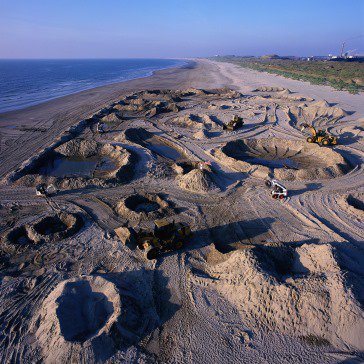Once Upon a Time
dal 6/7/2011 al 8/10/2011
Segnalato da
Francis Alys
Cao Fei
Pierre Huyghe
Aleksandra Mir
Mika Rottenberg
Janaina Tschape
Joan Young
6/7/2011
Once Upon a Time
Deutsche Guggenheim, Berlin
The project focuses on how fantastic stories and modern fairytales are represented in video art today. Based on important video artworks from the Solomon R. Guggenheim Museum collection, the exhibition investigates how contemporary artists adapt motives and narrative techniques from myths, fables, and fairy tales to mirror current social phenomena and events in recent history. It features a selection of video installations and single-channel works by Francis Alys, Cao Fei, Pierre Huyghe, Aleksandra Mir, Mika Rottenberg, and Janaina Tschape that explore this practice in contemporary art.

Curated by Joan Young, Guggenheim Associate Curator, Contemporary Art, and Manager, Curatorial Affairs
Once Upon a Time focuses on how fantastic stories and modern fairytales are represented in video art today. Based on important video artworks from the Solomon R. Guggenheim Museum collection, the exhibition Once Upon a Time, organized by Joan Young,
Guggenheim Associate Curator, Contemporary Art, and Manager, Curatorial Affairs, investigates how contemporary artists adapt motives and narrative techniques from myths, fables, and fairy tales to mirror current social phenomena and events in recent history.
Once Upon a Time features a selection of video installations and single-channel works by Francis Alÿs, Cao Fei, Pierre Huyghe, Aleksandra Mir, Mika Rottenberg, and Janaina Tschäpe that explore this practice in contemporary art.
Aleksandra Mir and Francis Alÿs manipulate belief in similar ways, imagining tales of collective emancipation. In First Woman on the Moon (1999– ) Mir reenacts the historic 1969 lunar landing with female astronauts on a beach in the Netherlands. The event is a feminist sequel to the original mission, extending the mediated legend. Similarly, Alÿs fabricates a modern urban myth in When Faith Moves Mountains (Cuando la fe mueve montañas, 2002). For this work, approximately five-hundred volunteers shoveled sand up and over a dune in the outskirts of Lima, Peru, until the mountain moved about ten centimeters from its original position.
The endeavor demonstrates the potential power of a collective working together toward a goal, even one so fleeting. Janaina Tschäpe explores historical memory in Lacrimacorpus (2004), in which she adopts the legend of the squonk or Lacrimacorpus dissolvens, a sorrowful creature who, when trapped, dissolves into a pool of its own tears. Tschäpe’s creature inhabits the Schloss Ettersburg, near Buchenwald, notable for both its literary and horrifyingly tragic history. The protagonist in Pierre Huyghe’s One Million Kingdoms (2001), manga character Annlee, intertwines astronaut Neil Armstrong’s account of the first moon landing (from which her voice is digitally derived) with passages from Jules Verne’s 1864 novel A Journey to the Center of the Earth (Voyage au centre de la Terre), mapping the landscape as she speaks.
The fables presented by Mika Rottenberg and Cao Fei use fantastical tropes to dramatize alienation in an industrial context. In Whose Utopia (2006) Cao examines the effects of capitalism on individual workers at the OSRAM China Lighting Ltd. factory in the Pearl River Delta. In Dough (2006) Rottenberg seeks to counterbalance the dehumanization of work by creating an absurd assembly line manned by laborers whose bodily excretions and extraordinary physiques play a part in the literal sweatshop.
Each work in Once Upon a Time tells a story and leaves the viewer subtly altered by the possibilities for transformation of human, political, and social conditions.
Press Contact: Deutsche Guggenheim/ Sara Bernshausen t: +49 (0)30
202093-14 e-mail: sara.bernshausen@db.com
Image: Aleksandra Mir, First Woman on the Moon, 1999
© VG Bild-Kunst, Bonn 2011
Press Conference: Thursday, July 7, 2011, 11 am Atrium of Deutsche Bank
Deutsche Guggenheim
Unter den Linden 13 / 15, 10117 Berlin-Mitte
Daily, 10 a.m. – 8 p.m.; Mondays, admission free
Admission: 4 Euros, reduced 3 Euros - free entrance on Mondays



